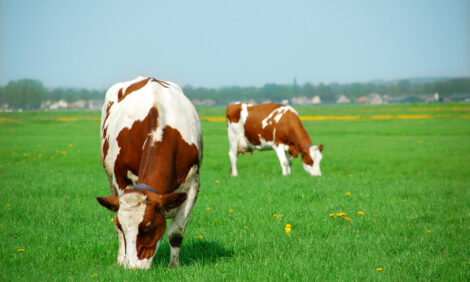



Harnessing Carbon to Boost Sustainable Farming
EU - Some 100 experts from five continents meet today to chart the way to harnessing a large new flow of funding – carbon finance – to agricultural development and to improving the lives of poor farmers the world over.Billions of dollars are available every year under the Kyoto Protocol’s Clean Development Mechanism to finance initiatives helping reduce the amount of Greenhouse Gas (GHG) emissions into the atmosphere.
But so far little of this money has been going to agriculture, although it offers very real potential to reduce GHG pollution since it is a leading source of emissions – contributing some 30 percent at global level when land-use changes and the intensive livestock sector are included.
The meeting, taking place from 28-30 October in West Lafayette, Indiana, will discuss how agriculture can tap into a market worth an estimated €12 billion in 2007. That market has developed under the Kyoto Protocol’s Clean Development Mechanism (CDM), whereby industries in industrialized countries can fulfil their obligations to reduce their GHG emissions by investing in emission-saving projects overseas.
Slow change, help poor farmers
“This is a win-win-win opportunity,” says FAO Senior Officer Theodor Friedrich, an expert in sustainable production intensification (SPI). “We have a chance to slow climate change, help poor farmers make a better living and improve soil health and productivity all at the same time.”
But in order to qualify for CDM financing, farm projects would need to produce scientifically measurable evidence of how much they can reduce GHG emissions as compared with traditional farming. Ways would also need to be found to reliably monitor those results and establish prices paid for carbon sequestration that are attractive to small farmers.
These are some of the issues to be debated at the meeting, jointly organized by FAO and the Conservation Technology Information Centre, with the support of the United Nations Framework Convention on Climate Change.
When land is tilled and ploughed in traditional farming systems, the CO2 stored there is released into the atmosphere, contributing to GHG buildup and hence climate change. But SPI systems such as no-till Conservation Agriculture (CA), in which seeds are drilled directly into the ground through the vegetation cover, are much more climate-friendly.
No-tillage
CA can in fact remove significant quantities of CO2 from the atmosphere and store it in the soil. Says Friedrich, “In theory, application of no-tillage farming methods to all of the world’s 5 billion ha of agricultural land could allow up to three billion tonnes of atmospheric carbon to be sequestered every year for 30 years.
“This is roughly the annual rate at which human-induced CO2 is currently increasing.”
Soil that is rich in carbon is healthier and better at storing water, which it means it does a better job of coping with the higher temperatures and less reliable rainfall expected as a result of climate change. Such soil is also more productive.
“Using CDM funding to promote CA and other SPI systems in developing countries could give a significant boost to development,” Friedrich added. “It would also increase world food security and do much to help the global community as a whole, and vulnerable populations in particular, overcome the threats of climate change.”
TheCattleSite News Desk


